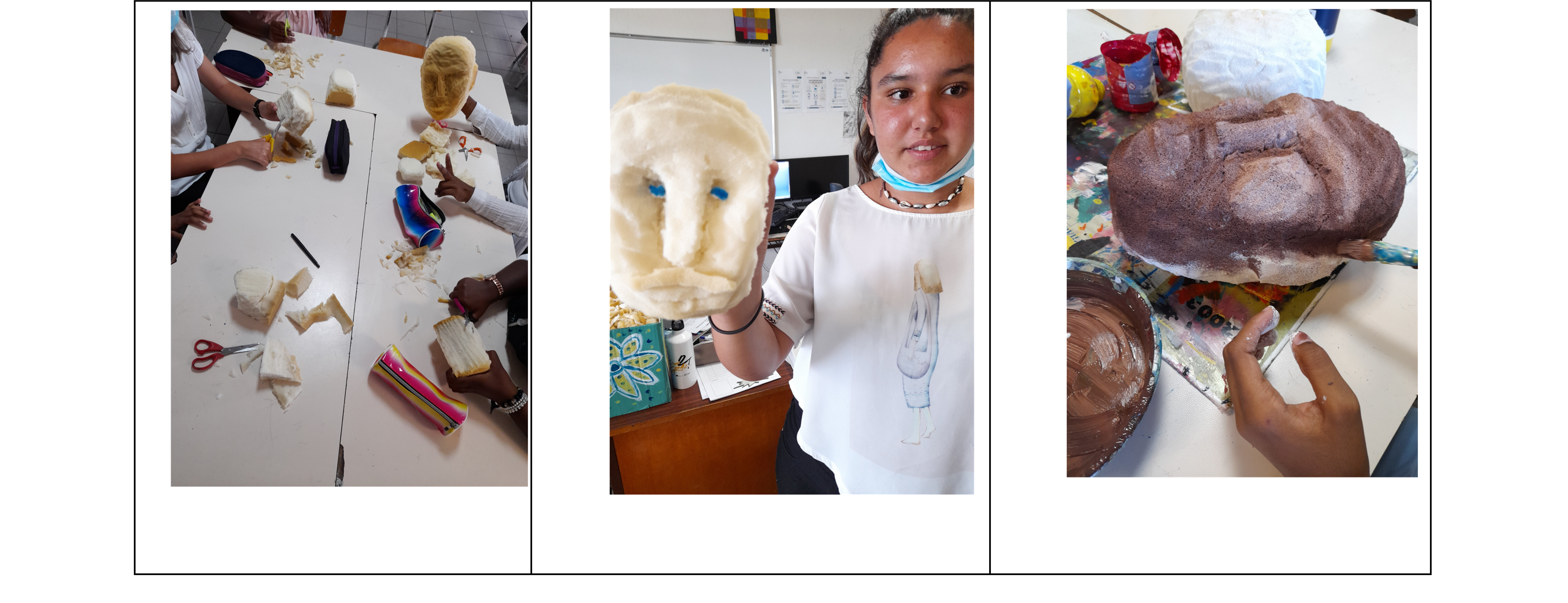1 Using the European heart materials in school
1.1 Description of the pilots
France: Lycee Rontaunay
On Reunion Island, an overseas department in the Indian Ocean, the project was carried out mainly with pupils in the first year of the CAP " Early childhood educational assistant” although other pupils from the high school were also made aware of William Glasser's principles of basic needs. For these young people enrolled in early childhood training, a deepening of these notions, as well as the development and manipulation of tools such as puppets, were logical and essential. The whole class worked on a project around Reunionese culture in the form of workshops and a show for the children of the neighbouring kindergarden school. One group developed the story of Edmond Albius, a young slave who discovered the pollination of vanilla. This group particularly developed the historical part of the Heart project. Other groups designed a workshop on medicinal plants, another on traditional instruments and finally a last group made and animated a giant textured puzzle on the geography of the island.
First, we worked in small groups on basic needs, using the slides and the IO1 booklet. The pupils did the exercises to reflect on their individual strengths. Then, as they need to be active, we made a 3D pyramid with cardboard boxes and paint. We were then able to use the pyramid for a game about basic needs on Secularity Day. Several classes took part in the game and were willing and receptive to the concepts discussed.
To develop the puppet show, we worked alternately during the class hours dedicated to the project, in collaboration with the "animation and development" teacher and the history teacher, but we also worked outside, during the summer holidays (southern hemisphere) in a public park. The costumes were completed by the applied arts teacher. The script was written by the teaching team, as the school time was too short to involve the pupils, but they were able to adapt the lines during practice. This memorization part was particularly challenging for these pupils who are not very comfortable with this kind of school routine. Even more so in English, hence the occasional support from the English teacher to help them. But in the end, they really proved their mastery of their text by translating it spontaneously into Creole during the filming.

Figure 6: During the puppet workshop (creation) at Lycee Rontaunay
Links with the School Curriculum in Applied Arts:
Observation and analyse:
1-Visit of the shooting of a short film about Albius.
2- Attend a Theater performance for young children
3- Analyse of different technics of puppet making.
4- Experimentation: sketches for each character.
5-making of: foam sculptures for heads and hands, painting and patina effects. Gluing and sowing of real human clothes with the foam parts. Adaptation of the clothes for puppets handling.

Figure 7: Dan Herzberg ,aka M.Bellier-Beaumont, told us about his job as an actor, his role in "Taxi 1", a blockbuster that the pupils knew by heart, his family of Polish Jewish origin who survived the Shoah and his uncle who had translated Hamlet into Yiddish. Very nice man, very interesting.
Links with the School Curriculum in Animation:
Creation and use of materials and tools for interactions with children.